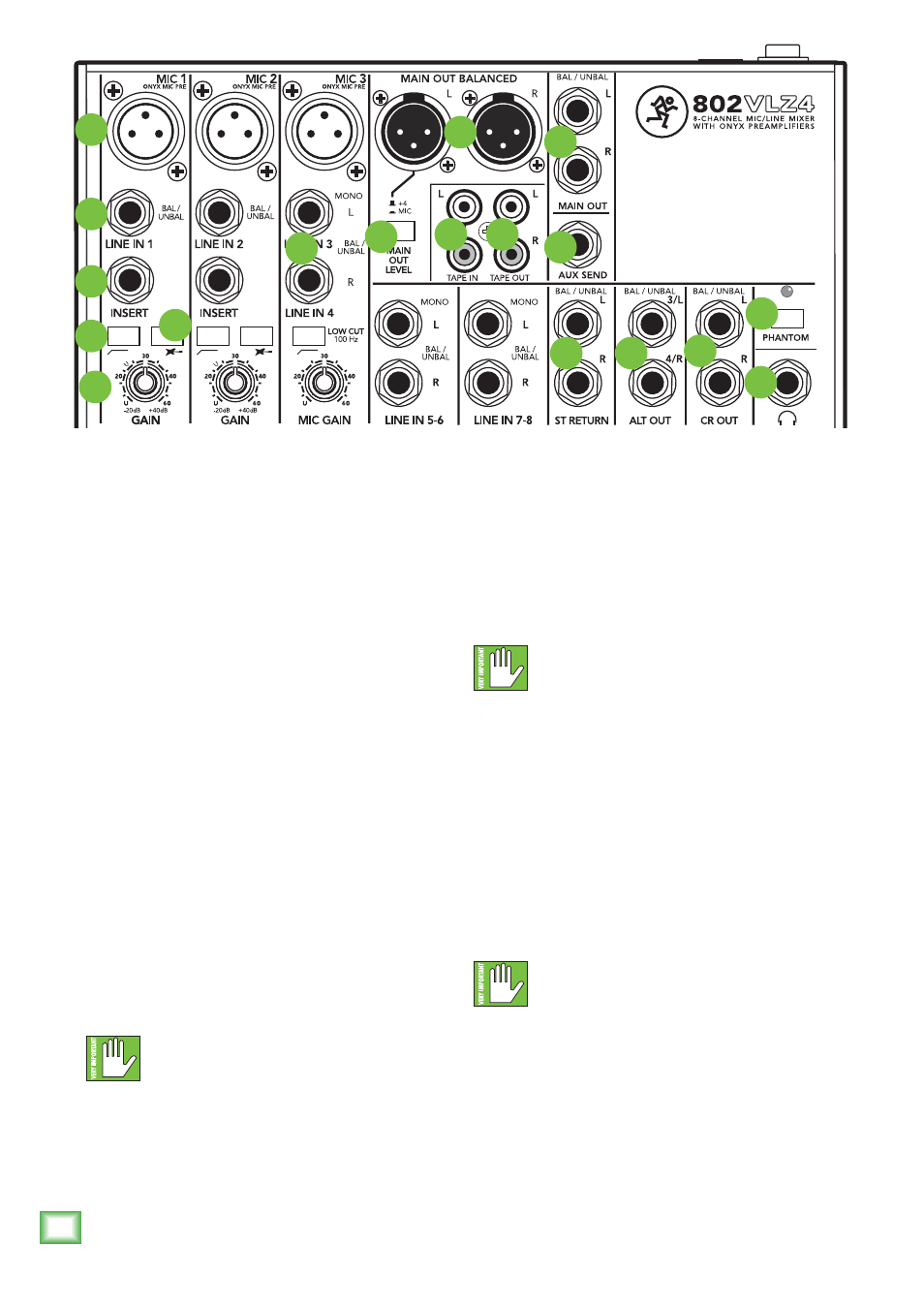Control room outs, Phones, Phantom switch and led – MACKIE 802VLZ4 8-Channel Ultra-Compact Mixer User Manual
Page 14: Tape in, 802vlz4

802VLZ4
14
802VLZ4
12. Phantom Switch and Led
This global switch controls the phantom power supply
for condenser microphones plugged into the mic [1]
inputs. See the phantom power details on page 11
before using this switch.
Press the switch in to engage phantom power to the
three mic inputs. Press the switch out to turn it off.
The LED will come on when phantom power is engaged.
Phantom power is supplied to all three mic
inputs at once, therefore, do not use a
ribbon microphone in any of these inputs
when phantom power is engaged.
13. Tape In
Connect computer audio outputs, or tape recorder’s
outputs here, using standard hi-fi (RCA) cables.
Use these jacks for convenient tape playback of your
mixes. You’ll be able to review a mix and then rewind
and try another pass without repatching or disturbing
the mixer levels. You can also use these jacks with a
portable tape or CD player to feed music to a PA system
between sets.
WARNING:
Engaging both the tape and assign
to main mix buttons in the control room
source [30] matrix can create a feedback
path between tape input and tape output. Make sure
your tape deck is not in record, record-pause, or input
monitor mode, when you engage these switches, or
make sure the control room / submix [32] level knob
is fully counterclockwise (off).
10. Control Room Outs
These TRS 1⁄4" balanced/unbalanced outputs
allow you to listen to something other than the main
mix. These outputs are often used to run a nice pair of
powered studio monitors in a control room. The source
is selected using the source matrix [30] switches
(see page 19). You can choose to listen to the main mix,
the alt 3-4 stereo bus (see mute/alt 3-4 on page 16),
soloed channels, or the tape input. The volume is
adjustable with the control room/submix [32] knob.
11. Phones
This stereo jack will drive any standard headphone to
very loud levels. "iPod"-type and computer headphones
may also be used here, with a 1/4" male to 1/8" female
stereo adapter.
To learn how signals are routed to these outputs, see
source matrix [30] on page 19. The level is adjusted
with the phones knob [31], and the source is whatever
the control room output is playing, such as the main
mix, the alt 3-4 stereo bus, soloed channels, or the tape
input. If you’re wiring your own cable for the phones
output, follow standard conventions:
Tip = Left channel
Ring = Right channel
Sleeve = Common ground
WARNING:
The headphone amp is loud,
and can cause permanent ear damage.
Even intermediate levels may be painfully
loud with some earphones.
BE CAREFUL!
Always
turn the phones [31] knob all the way down before
connecting headphones. Keep it down until you’ve
put the phones on. Then turn it up slowly.
1
2
4
5
7
3
6
8
9
13 14
17
16
15
18
10
12
11